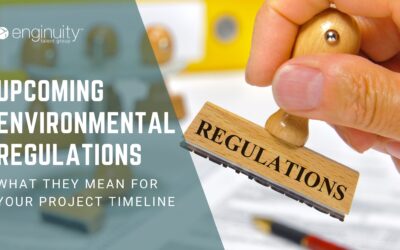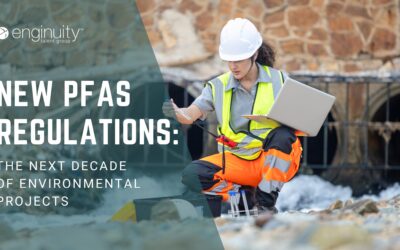Environmental hiring has shifted from being a niche priority to a central component of workforce planning for companies across industries. Organizations once content to treat sustainability as a compliance checkbox are now recognizing it as a driver of innovation, efficiency, and brand value. Renewable energy projects are breaking ground at an unprecedented pace. Construction firms are retrofitting old buildings to meet green standards. Manufacturers are overhauling production lines to minimize waste and reduce emissions. This transformation is being propelled by a perfect storm: regulatory pressure, investor expectations tied to ESG metrics, and a public that increasingly favors eco-conscious brands. Yet as the demand for environmental expertise skyrockets, companies are confronting a stark imbalance; there simply aren’t enough skilled professionals to go around. That scarcity is forcing hiring managers to rethink everything from recruitment channels to retention strategies. The winners in this evolving market will be the organizations that understand the drivers of this surge, anticipate its long-term effects, and build pipelines capable of delivering the right talent at the right time.
The Drivers Behind the Environmental Hiring Boom
The current wave of environmental hiring is rooted in a blend of global policy changes, market forces, and cultural shifts. International agreements like the Paris Accord and domestic policies aimed at carbon neutrality are driving investment in renewable infrastructure. Governments are channeling billions into grants, subsidies, and tax incentives for clean energy projects, conservation initiatives, and sustainable urban development. Even sectors not historically associated with environmental innovation, such as oil and gas, are investing heavily in green technologies to diversify their portfolios and improve public perception.
Beyond regulation, market competition is accelerating the shift. Clients and investors are placing greater value on sustainability credentials, forcing firms to build internal expertise or risk losing business. In many industries, environmental performance is now a key factor in winning contracts. Social pressure plays a role as well; a workforce increasingly comprised of Millennials and Gen Z is prioritizing employers with strong sustainability commitments. Collectively, these drivers are creating an unprecedented demand for professionals who can navigate environmental compliance, innovate within green frameworks, and translate strategy into operational results.
The Roles Most in Demand
The range of environmental roles in demand is expanding rapidly, but several positions stand out as especially competitive. Environmental engineers are critical for designing systems that minimize ecological impact while meeting project specifications. Compliance specialists ensure adherence to an ever-growing web of environmental laws and regulations, avoiding costly penalties and project delays. Sustainability consultants are sought after for their ability to bridge the gap between high-level goals and practical implementation, guiding companies toward achievable, measurable improvements.
There’s also growing demand for professionals skilled in environmental data analysis. With ESG reporting becoming a standard requirement, companies need experts who can collect, interpret, and present environmental performance data in a way that satisfies both regulators and stakeholders. Mid-level professionals who can combine technical know-how with project management expertise are especially valuable. Their ability to oversee initiatives from design to execution makes them indispensable in achieving environmental objectives on time and within budget.
How the Talent Shortage Impacts Project Timelines
The lack of environmental talent is more than an HR issue, it’s a risk factor for operational performance. Without specialized expertise, projects can stall during permitting, fail environmental impact assessments, or run afoul of local and federal regulations. These setbacks not only delay timelines but can also escalate costs, erode client trust, and create reputational damage.
In industries where timing is critical, such as construction, renewable energy deployment, and infrastructure modernization, these delays can ripple across multiple stakeholders. Missing environmental compliance milestones can jeopardize funding, void contracts, or result in fines that eat into profit margins. Even when companies outsource environmental work to consultants, the lack of available in-house expertise can lead to miscommunication, slower decision-making, and diminished oversight. The result is a situation where projects are vulnerable not because of a lack of financial resources or technical capability, but because the right people aren’t in place at the right time.
Building a Sustainable Environmental Talent Pipeline
Meeting the demand for environmental professionals requires a strategic approach to talent development, not just short-term hiring pushes. A sustainable pipeline begins with cultivating relationships with educational institutions that specialize in environmental sciences, engineering, and sustainability studies. By offering scholarships, sponsoring capstone projects, or participating in curriculum development, companies can ensure that graduates are entering the workforce with the skills employers need most.
Beyond external partnerships, companies should look inward to identify employees with the aptitude and interest to transition into environmental roles. Structured internal training programs can upskill existing staff, creating a reservoir of talent that is loyal to the organization and familiar with its operations. Workforce planning should also account for future needs, forecasting which skills will be in demand three to five years down the road. This forward-thinking approach allows organizations to avoid reactive hiring and instead maintain a steady supply of qualified candidates ready to step into critical roles as the market evolves.
Cross-Training as a Fast-Track Solution
Cross-training has emerged as one of the fastest ways to bridge the environmental skills gap without relying entirely on external hires. By providing current employees with targeted training in environmental best practices, regulatory frameworks, and sustainability tools, companies can rapidly expand their internal capabilities. For example, project managers can be trained to integrate environmental compliance milestones into overall project schedules, reducing the risk of last-minute surprises. Engineers can learn to factor sustainability metrics into their designs from the outset, creating efficiencies and avoiding costly redesigns later.
Cross-training not only addresses immediate needs but also improves resilience. A workforce that understands environmental priorities across multiple disciplines is better equipped to adapt to evolving regulations and market demands. It also enhances collaboration, as teams share a common vocabulary and set of objectives around sustainability. While this approach requires upfront investment in training programs, the payoff in operational flexibility and reduced reliance on a scarce external talent pool can be substantial.
Leveraging Technology to Streamline Environmental Workflows
Technology can be a decisive advantage in managing environmental projects, especially when qualified talent is stretched thin. Tools like Geographic Information Systems (GIS) allow teams to map and monitor environmental impact with remarkable precision, while drone-based surveying can capture high-resolution site data in hours instead of days. AI-powered modeling software can simulate potential environmental risks, such as water runoff patterns or air quality fluctuations, before a shovel ever hits the ground.
Adopting these technologies doesn’t just accelerate workflows; it enhances decision-making quality. By reducing manual data collection and human error, environmental teams can focus their expertise on solving complex problems rather than wrestling with basic logistics. However, technology adoption must come with an investment in training. Too often, software is deployed without ensuring that staff have the skills, or the confidence, to use it effectively. Companies that combine skilled professionals with cutting-edge tools and embed training into their onboarding and continuous learning programs create an environment where efficiency and quality reinforce each other.
Retaining Talent in a Competitive Market
Recruitment may fill immediate gaps, but retention is what preserves organizational strength over the long term. In a market where environmental professionals are in high demand, even a small lapse in engagement can lead to costly turnover. Competitive salaries will always be part of the equation, but the most successful retention strategies go further. Career growth opportunities, such as leadership development tracks, specialized training certifications, or opportunities to lead high-visibility sustainability initiatives, signal to employees that they have a future within the company.
Culture is equally important. Environmental professionals are often purpose-driven, motivated by work that aligns with their values. Employers who communicate their environmental commitments clearly, back them with measurable action, and involve employees in shaping sustainability goals will foster deeper loyalty. Recognition programs that celebrate not only project completion but also innovation, problem-solving, and leadership can keep employees engaged in a way that purely financial incentives cannot. In a competitive market, a positive, purpose-oriented culture can be a deciding factor in whether talent stays or leaves.
Strengthening Partnerships with Educational Institutions
The path to solving long-term talent shortages often begins years before a professional enters the workforce. Establishing formal partnerships with universities, trade schools, and research institutions enables companies to influence the skill sets being developed in future environmental workers. This might involve collaborating on specialized courses in renewable energy design, environmental compliance law, or sustainable materials engineering.
Beyond shaping curriculum, partnerships can create recruitment channels that bypass the traditional scramble for talent. Offering internships, scholarships, or co-op positions ensures a steady flow of candidates who are already familiar with the organization’s tools, workflows, and culture. These early relationships also position the company as an employer of choice in the eyes of students who will soon enter the job market. Over time, this approach turns academic partnerships into a self-sustaining pipeline of highly prepared entry-level hires who can be developed into mid-level leaders.
Expanding Recruitment Across Industries and Borders
When domestic talent pools run dry, companies need to think laterally about where environmental expertise might already exist. Industries such as oil and gas, aerospace, logistics, and public health produce professionals with skills that overlap significantly with environmental project needs. An environmental risk assessor in the mining sector, for instance, could transition into a role assessing the sustainability of urban infrastructure projects.
Geographic expansion is another avenue. Many regions around the world have robust environmental training programs and industry experience that can be tapped through international recruitment. While global hiring requires navigating visa regulations, relocation support, and cultural integration, it can open access to candidates with rare or highly specialized skills. Firms that broaden their horizons beyond traditional candidate sources often discover perspectives and methodologies that improve not only project outcomes but also organizational resilience.
Planning for Long-Term Workforce Resilience
The surge in environmental hiring is not a temporary spike, it signals a fundamental realignment of workforce priorities across multiple industries. To avoid scrambling every time demand surges, companies need long-term workforce resilience strategies. Succession planning is a key part of this, ensuring that when senior environmental professionals retire or move on, qualified replacements are ready to step in without disrupting operations.
Workforce resilience also relies on robust knowledge transfer processes. That means documenting workflows, creating internal training resources, and fostering mentorship relationships so institutional knowledge isn’t lost. Pairing succession planning with continuous skills forecasting allows organizations to anticipate which environmental roles will become mission-critical in the future and start preparing talent now. Companies that embed environmental staffing into the same strategic category as finance or operations will be the ones best equipped to adapt to new regulations, seize emerging opportunities, and weather inevitable talent market fluctuations.
Securing Your Competitive Edge in the Green Economy
The environmental hiring surge is rewriting the rules of talent management. In today’s sustainability-driven economy, environmental professionals are not an optional support function, they are core contributors to innovation, compliance, and market competitiveness. Organizations that understand this reality and act accordingly will build more than just strong teams; they will secure a lasting advantage in an increasingly green marketplace. By blending smart recruitment practices, robust retention strategies, academic partnerships, cross-industry recruitment, and long-term resilience planning, companies can ensure that they have the talent needed not just for today’s challenges, but for the sustainability demands of tomorrow. In the race toward a greener future, the organizations with the strongest environmental workforces will be the ones setting the pace.







0 Comments